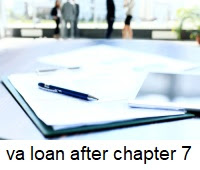THE FROZEN SOUTH
My heart warmed at the email I received notifying me of the acceptance of my grant application to the Australian Antarctic Division. I was going to be able to lead my own team during the international collaborative Census of Antarctic Marine Life. Anything venomous that came up was ours. The Viking in me grew longer horns and the loincloth acquired quite a few more layers. I was going to the furthest ends of the world. While I had been far north up in Norway, nothing could match Antarctica. I had no idea what would be the dominant venomous life form down there, but wherever there is life, there is venom.
First, I had to complete the medical. “This is going to be amusing,” I thought, when I saw that I had to undergo a psychological evaluation. The questions mostly had to do with how a person would cope with variable environments that were extremely different from the norm, and with social isolation. Since I was approved, they could only be selecting for antisocial, career-obsessed nutjobs!
Then it was off to Tasmania for pre-training and gear fitting for the team of Eivind Undheim, his wife Hanne Halkinrud Thoen, and myself. We packed up the wagon and drove down to the wharf in Melbourne and boarded the Spirit of Tasmania ferry. Once in Tasmania, the drive down to Hobart was interrupted periodically to check out road-killed snakes and Tasmanian devils. We deposited the gear at the depot to be loaded onboard the Aurora Australis, the 310-foot-long flagship vessel of the Australian Antarctic Division. Next came training. After covering the logistics and sampling schedule, the seminars concluded with the ship’s doctor giving us a highly entertaining description of the simple physics of how quickly our bodies would lose body heat if we fell into the water, and thus how lethal it would be. Seawater freezes at a lower temperature than fresh water, so the water would be several degrees below that needed to freeze a tray of ice cubes. The room full of extremely energetic and enthusiastic biologists appreciated this macabre data.
Our voyage was slightly delayed when, during the final stress-testing of the engines, the starboard thruster underwent a spectacular self-destruction. The change in schedule meant two weeks less at sea, but we would still spend over two months without setting foot on land. The shortened schedule also meant a more restricted research program, with geo-coring the major loser, not because it is not terribly important—it is—but because it is slow and cumbersome to bore out geological samples under such inhospitable conditions at extreme depth. Largely dropping that research program would, however, allow for the full suite of biosampling to be conducted, and there would still be some scattered shallow-depth core samples taken over the course of the voyage. The reduction in crew members also meant that program leaders such as myself had cabins to themselves—a true luxury on any ship.
We polar-suited up and put out to sea. There were many friends and family members along the pier as the dream became, for all, a reality. As skies were clear and seas calm, we had at least four days of easy steaming ahead of us. Our first meal lived up to the legendary reputation of the chefs on this vessel. Fine dining while in the Southern Ocean seemed extravagant, but we would need all the nutrition for the physically demanding work ahead of us. During the trip down, we had ample time for the crew to get to know each other, and to explore this amazing ship. We discovered a vast empty space in one of the holds, and used that for soccer matches. While the ball was airborne, the ship would roll, thus giving the impression that the ball was moving in the most insane trajectory. We could bend it like Beckham but then it would bend back again with a corkscrew twist.
We got very excited at the first ice. Just like when losing one’s virginity, looks didn’t matter much for this first time. That it was there was enough. Such was our ice. Only a couple of feet across and all worn out, like a southern beauty queen turned meth-head. But our ice steadily grew in size and beauty. Icebergs of all colors cruised by—green, blue, red, hard white, and all variations in between. All a result of the varying mineral content of the water. Some were truly ethereal. When we finally crashed into proper pack ice, it was as close to a religious experience as I am ever going to have.
During the long haul to reach the pack ice, we had seen many birds, mostly petrels and albatrosses. But as we reached the ice, there was an explosion in the numbers and species. For the most part, I had no idea what they were. Despite my spectacular lack of knowledge about Antarctic wildlife in general, and the birds in particular, I was, of course, able to recognize penguins. They were absolutely adorable and hilariously clueless about what a boat was. Suited up in their tuxedos for a big night out, they would watch the boat with a total lack of comprehension until the giant icebreaker would collide with their icy home, launching them acrobatically but harmlessly into the ocean. The seals were a bit more switched on and would gracelessly flop into the water as we got near.
We used metal chains to lash a ten-foot-long plankton seawater tank onto the helicopter deck and rigged up two pumps: one carrying water heated to almost boiling by running coils that accumulated engine heat; the other carrying icy seawater. As we were all rostered twelve hours on and then twelve hours off, the hot tub was occupied twenty-four hours a day. It was a whole new experience—basking in the surrealism of having light snow committing suicide against steamy flesh, while serene whales swam benevolently alongside. Whenever we anchored, the whales would come abreast and stick their barnacle-encrusted heads out of the water to gaze at us while we gazed at them. The days steadily grew longer, until the sun never really set: it dipped just under the horizon and the waters turned to blood for a few hours. This was my favorite time of day, and I drew up my team’s duty roster in such a way that I was on deck working the nets during this period.
The diversity and density of the Antarctic underwater life blew my mind. The tropics are always portrayed in documentaries as marine hotspots. They are, of course, but this viewpoint is skewed, as those regions are much more accessible and amenable to research than Antarctic waters. The sheer quantity and diversity of life in the Southern Ocean rivals anything I have seen on my expeditions to the Great Barrier Reef, Coral Sea, Asia, the Caribbean, or other locations in between.
Everyone met the first nets with much anticipation. Even those not rostered on deck were present to get the first glimpse of life under the ice. Benthic trawling was our primary method of collecting. The purpose of the trip was to survey the little-known life of the eastern Antarctic, and this was the most effective method. The nets were linked to a very heavy boom that allowed them to plummet to the bottom and stay pinned to it while being dragged along. This enabled us to efficiently collect all life present in the stretch of ocean floor. The first drag was mostly crinoids—the strange echinoderms—and also bryozoa, the coral-like life that is completely unrelated to coral. It was readily apparent that my usefulness in the sorting trays was going to be rather limited: I could assign most things to the kingdom Animalia only because they moved, and that was about it. So I set myself to working the nets and shoveling the collected material into large washing bins. Here mud was removed and the samples sent to the sorting tray conveyer belt, where specialists in different taxa divided them up by kind. The average net load was over one ton of material, so it was backbreaking, strenuous work. Exactly my style: a good workout while gazing upon the most breathtaking of sceneries.
The various species of ice-fish that came up in the nets consistently lacked any sort of reinforcement of the spines that stabilize the dorsal fins, indicating a total lack of venom. Similarly, the sea spiders appeared to be totally non-venomous, despite being another obvious inspiration for H. R. Giger in designing the face-huggers for the Alien movies. Pay dirt, however, was struck with the octopuses. The work I had been doing with octopus species from Australian temperate and tropical waters had revealed that venom was a shared characteristic of all octopuses, so any octopus counted as a venomous species. Not only were the octopuses present in abundance, but they also seemed extremely diverse. Knowing nothing about the taxonomy, we kept the venom glands from each specimen separate from those of any other and also took a DNA sample from each one, so that once back onshore we could determine their evolutionary relationships and link these to changes in venom. I was particularly interested in two types that looked virtually identical but differed sharply in their venom system. One had a massive beak and tiny glands, indicating that this type killed its prey using mechanical damage as the primary weapon. The other, however, was quite the opposite: it had a tiny beak but massive venom glands, indicating that its primary weapon was venom.
About three weeks into the trip, we ran into the unique type of massive polar storm that rightfully gives Antarctica the reputation of having the most extreme weather in the world. As the wind and waves steadily grew, even a ship as stately as ours started to feel the effects. Before long, the entire ship was shuddering and shaking from the impact of the huge waves. On the bridge of the boat, I was mesmerized watching these behemoths approach. At the peak of the storm, the waves were so large that they were crashing over the bow of the ship, which meant that they were at least sixty-five feet high. Every now and then a monster would hit us that was over one hundred feet. Suddenly our boat did not seem so big. Water would churn down the deck before chaotically pouring out of the side drains. This created a very specific hazard, so all hatches were sealed and on-deck activities suspended. Many people suffered from violent seasickness and the ship’s doctor was extremely busy. I gorged myself on the extra rations that became available as many people were declining food, and largely spent my time in the sauna.
The storm cleared as quickly as it had appeared. The air was saturated with small ice crystals, resulting in a halo around the sun. We set up to do some extremely deep trawls now, with the nets reaching depths exceeding one and a half miles. It took over thirty minutes to drop the nets, but we spent four hours bringing them up! The super-deep drags mostly brought up otherworldly-looking flounder-shaped amphipods and tadpole-like fish. Octopuses also showed up in the nets down to a depth of nearly one and a half miles. Moving back up the abyssal slope to about a quarter mile deep, we started getting more and more octopuses, until it finally happened: we had caught a giant octopus. I didn’t even know Antarctica had its own, independently evolved species of giants. And a bonus—it was bright red. The giant, bell-shaped mantle was the size of a beach ball, and when I lifted the octopus up above my six-foot-three-inch self, the tentacles still reached the floor. The venom glands were flat milky jade discs nearly four inches across. In short order, two more giants came onboard in the nets. The particular microhabitat that we were surveying at this time was obviously the preferred one for these magnificent animals.
High on adrenaline, I was lost in my thoughts as I strode across the deck, “From Out of Nowhere” by Faith No More searing my eardrums. Not paying attention to where I was going, I walked at full speed into the two-inch-diameter metal cable that was under the tension of another trawl. I smashed face-first right into it, catching the full impact on my right cheekbone. It fractured with an all-too-familiar feeling. As we were still only halfway through the trip, and there was nothing to be done for this non-critical injury, I just kept it to myself and quietly dealt with the pain.
This wasn’t the only injury I accumulated. The glass sponges and bristle worms were the bane of my existence as their fiberglass-like spines would penetrate even gloves and cause great physical irritation. I also slightly tore a plantar tendon in my left foot while doing yoga one day. I was deep in a lunge position stretch, leaning over my front left leg, when a large wave hit the ship sideways, causing me to lose balance, tipping forward and putting incredible strain on the tendons of the leg. I was also getting tendonitis in my forearms, but this was a simple mild irritant. However, two days before the end of the trip, when lifting a mud-filled net, I tore the tendon that had been repaired in my right index finger following the destruction by the lace monitor a half year earlier. This was an incapacitating injury that could not be ignored. We had nearly finished the voyage, however, so I was able to just wrap it up and get through the final session, knowing full well that I needed to have surgery on it immediately upon my return to Melbourne. Using the satellite uplink, I communicated with a specialist surgeon I knew who treated a lot of Australian Rules football players and their incredibly screwed-up fingers.
At the completion of the incessant trawling we sank a net full of styrofoam cups to a depth of two and half miles. Everyone onboard had made cups of various designs, including very intricate ones prepared pre-trip by some. The incredible pressure at this depth caused the air in the cups to be compressed out, warping them to a small fraction of their previous size, with the irregular shaping adding a unique twist to each of the designs. I used the opportunity to make one for my parents. Now the tiny funny-shaped cup with ugly drawings is a souvenir in their house and I wonder if the guests think it was made by a kindergarten pupil as a Mother’s Day gift.
The next day we set sail to return to Tasmania. The Aurora Australis docked in Hobart just before the completion of the iconic Sydney to Hobart Yacht Race. We were able to see the spaceship-sleek vessel Wild Oats come in with daylight between it and all other contenders. Back on solid land after two months at sea, with our equilibrium already shot, we took advantage of this loss of balance to cloak the effects of our liberal sampling of the wine festival that accompanied the yacht race.
With a bit of time to kill before heading back to Melbourne, despite the injury to my finger, I took the opportunity to dive at my favorite spot off Bruny Island to collect rock lobsters. This particular place is quite near a seal rookery and it was always a delight to play with these mischievous torpedoes. On this particular day they were a bit more skittish than usual, but I thought nothing of it since seals are pretty mental creatures and thus wildly unpredictable in their behavior. As I was working the rocky underwater slope that led into the deeper water, a school of two-and-a-half-foot-long mullet passed by, cavorting and shimmering like kamikaze pilots on their way to a happy ending. Less than a minute later, they came flying past me in a disorganized, chaotic stream. Watching them flash past, I turned back to face the deep green gloom just in time to see a six-foot-tall tail flick ten feet away from me, as a sixteen-foot, very bulky great white shark swam by, close enough that I felt the wake of its passing. Slowly easing back into the rocks, I did my best to still my frantically beating heart. Holding my breath so that there weren’t any telltale bubbles, I slowly, stealthily worked my way into the shallows, taking my bag full of tasty rock lobsters with me. Walking slowly to the car after the excitement, I almost completed the day by stepping on a three-foot-long, patternless, black-colored tiger snake that was in the shade of the car.
After the eventfulness of the Antarctic trip, it was back to Melbourne, followed by surgery number two to fix the tendons sliced by the lace monitor lizard. This was followed by another frustrating recovery period, but at least this time my hand was not strapped to my chest. I just had to wear a metal brace for a few weeks. During this period, Eivind, for his Master’s research under my supervision, worked diligently on the samples we collected in Antarctica, resulting in two great papers for the team. The first showed that the venoms of Antarctic octopuses have been evolutionarily selected to be most active at freezing temperatures, actually becoming less efficient at warmer temperatures. This points to potential problems for such animals in adapting to warming oceans. The second paper focused upon the genetics of the specimens, revealing four new species of Antarctic octopus, one of which was so divergent that it will be in a new genus. All in all, the most productive and satisfying field expedition of them all.
Beginner's Cryptocurrencies
Track Cryptocurrencies
Make Money i.e.
Get Cryptocurrencies
Initial Coin Offering
Asset Invest Cryptocurrencies
Drawbacks Cryptocurrencies
Future Cryptocurrency
Cryptocurrency FAQ
Performing Cryptocurrencies
Best Altcoins 2025
Bitcoin Overview 2025
Ethereum Overview 2025
Solana Overview 2025
Ripple Overview 2025
Cardano Overview 2025
Polygon Overview 2025
Chainlink Overview 2025
Polkadot Overview 2025
Avalanche Overview 2025
Helium Overview 2025
Blockchain Trends 2025
Decentralized Finance
Metaverse Cryptocurrency
Satoshi Nakamoto Cryptocurrency
Jeff Bezos Cryptocurrency
Famous With Cryptocurrency
Changpeng Zhao Cryptocurrency
ICO Cryptocurrency
Emerging Meme Coins
Pepe Unchained ($PEPU)
Trend 2025 Cryptocurenncy
Making Sense Bitcoin Boom
Cryptocurrency Trend 2025
Fiat Currency
Non-Fungible Token (NFT)
Cryptocurrency Risks




































No comments:
Post a Comment